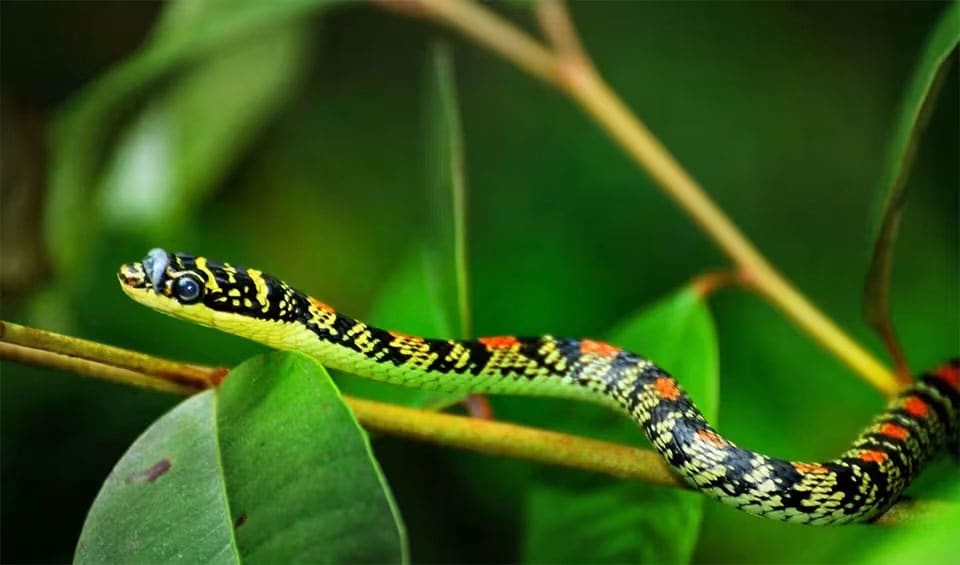Despite its common name, it typically exhibits a bright green coloration with black cross-hatching and yellow or gold accents, creating a dazzling and distinctive appearance. This snake is a member of the genus Chrysopelea, which is renowned for its ability to “glide” or “fly,” thanks to a remarkable locomotion technique that allows it to leap from tree to tree—a behavior that has led to the moniker “flying snake.”
Widely distributed across Eastern and Western Asia, including countries like India, Thailand, Indonesia, and the Philippines, golden tree snakes are arboreal, spending much of their time in trees. They possess a highly specialized set of ribs that can flatten out their body, increasing their surface area and enabling them to glide through the air when leaping from tree to tree.
Although they can bite when threatened, the golden tree snake’s venom is not dangerous to humans, causing only mild symptoms at most. They use this venom primarily to subdue their prey, which consists largely of lizards, particularly geckos, as well as small mammals, birds, and frogs. Their agile movements and speed both in trees and on the ground make them efficient hunters.
The golden tree snake is diurnal, meaning it is most active during the day. It can often be seen basking in the sunlight to regulate its body temperature and is known for its impressive climbing ability, utilizing the rough surfaces of tree bark to ascend to the canopy.
Distribution
 Bangladesh
Bangladesh Bhutan
Bhutan Cambodia
Cambodia China
China India
India Laos
Laos Malaysia
Malaysia Myanmar
Myanmar Nepal
Nepal Sri Lanka
Sri Lanka Thailand
Thailand Vietnam
VietnamAnything we've missed?
Help us improve this page by suggesting edits. Glory never dies!
Suggest an editGet to know me
Terrestrial / Aquatic
Altricial / Precocial
Polygamous / Monogamous
Dimorphic (size) / Monomorphic
Active: Diurnal / Nocturnal
Social behavior: Solitary / Pack / Herd
Diet: Carnivore / Herbivore / Omnivore / Piscivorous / Insectivore
Migratory: Yes / No
Domesticated: Yes / No
Dangerous: Yes / No




